Numbing Cream Before Tattoo Removal: [Does It Really Work?]
It’s not a big secret that getting a tattoo or getting rid of one with a laser can hurt. And you’d do everything to lessen the discomfort the procedure creates.
Numbing cream has always been a popular option for tattoo removal, but does numbing cream really work for tattoo removal?
Creams that numb your skin don’t work very well because they only numb the top layer of skin and don’t work hard enough. When you get a tattoo removed with a laser, the pain comes from the ink breaking up under the skin. Numbing creams can’t reach this deep. Even if it doesn’t help, some patients like to use it because it makes them feel good.
Still, a lot of people still recommend numbing cream, and if you would like to try it out and know everything about how to utilize it stick with this article till the end.
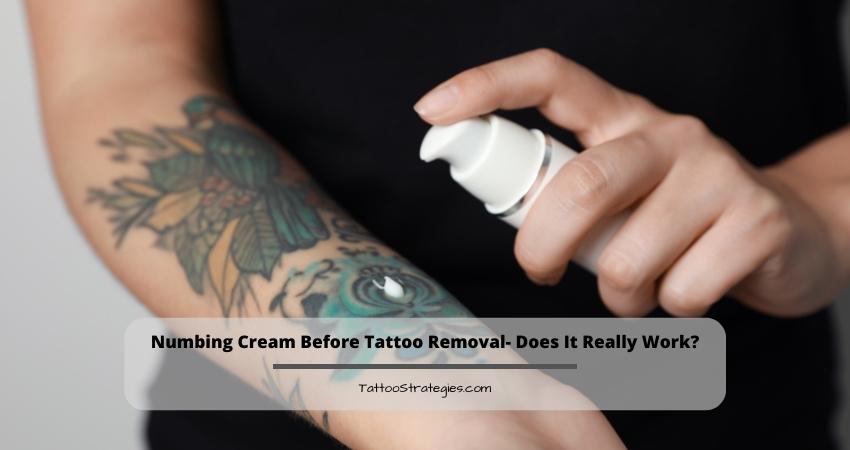
Does Numbing Cream Work to Remove Pain for Tattoo Removal?
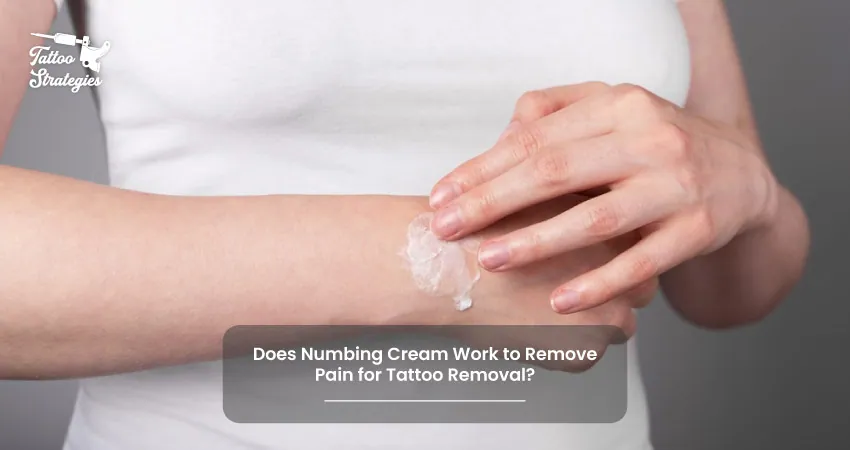
Most patients like numbing creams and think they help, but we’ve found mixed facts about them.
While some clinics provide it as an option for sensitive individuals who want greater numbing for an additional cost, others utilize numbing creams as the primary method of numbing the skin before laser treatments.
Creams that numb pain, like Emla or BLT, often have benzocaine, lidocaine, prilocaine, or tetracaine as their active ingredients, but in different amounts. There are both low-strength creams that you can buy without a prescription and high-strength creams that you can only get with a prescription.
The biggest problem with creams is that they take a while to work. Most creams have to be put on at least 30–45 minutes before the treatment.
Pros
- works on top of other ways to do it.
- Anyone can buy over-the-counter medicines.
Cons
- Must be used ahead of time.
- Not very effective.
Numbing Cream Before Laser Tattoo Removal
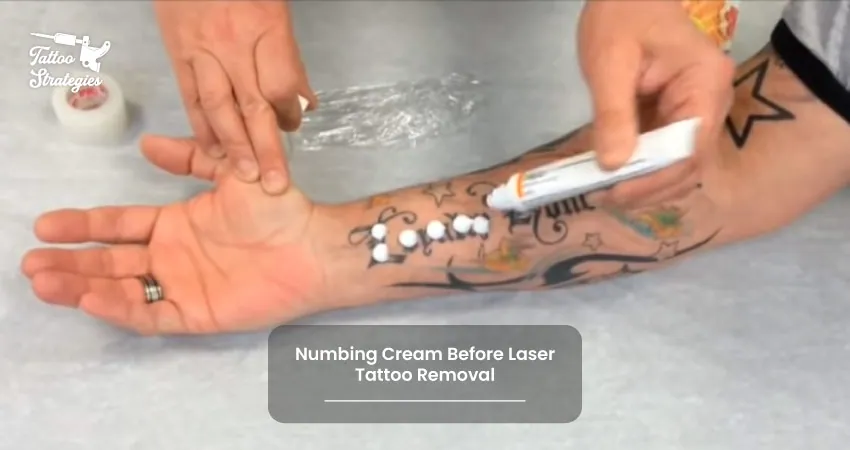
When it comes to laser removal, the pain can be unbearable, and many experts won’t do the procedure unless the client puts numbing cream on their skin first. During your consultation with your laser removal specialist, ask what will happen on the day of your appointment.
Some specialists will bring the numbing cream to you before your procedure. This may cost extra, though. If your specialist doesn’t offer this option or tells you to come in with numb skin, you might want to buy numbing cream on your own.
Numbing Cream Before Getting Tattoed
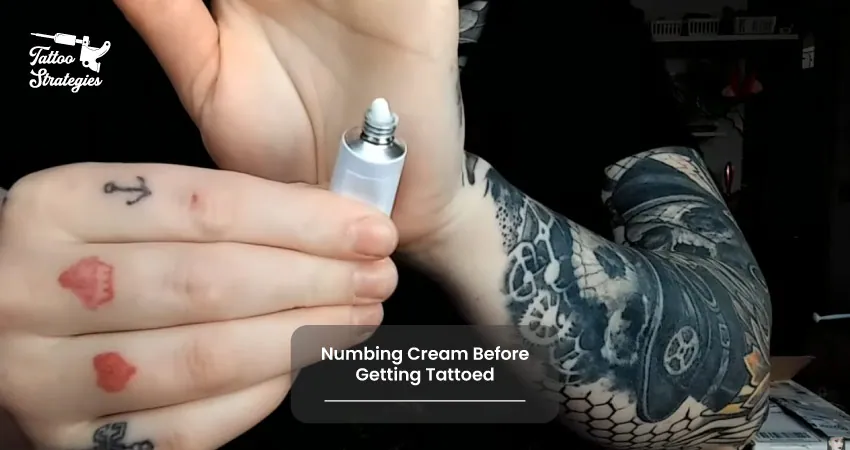
Most individuals can withstand the tingling feeling of receiving a tattoo for several hours. In the worst cases, when it hurts a lot, you might want to numb your skin before getting a tattoo.
Some parts of the body are much more painful than others to get a tattoo on, like the ribs, the tops of the feet, and the backs of the knees. Even though numbing cream doesn’t completely get rid of the pain, it can help reduce it and make your tattoo much more enjoyable, especially at the start of a long tattoo session.
One important thing to remember is that the numbing cream may stop working after a longer tattoo session (more than an hour under the needle), especially if the artist wipes the tattoo with surgical soap. Not only does the numbing cream stop working over time, but this soap also takes some of it with it.
How to Apply Numbing Cream
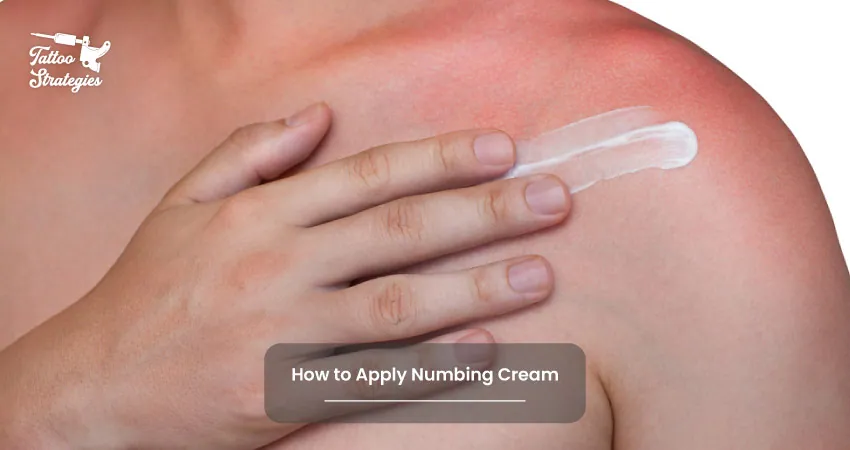
- Clean the area where you’re going to get a tattoo or laser.
- Scatter the cream all over the top of your skin with your fingers or a tongue depressor.
- After you’ve covered the whole area, tape masking tape around the edges of the plastic wrap to keep it tight.
When to Apply Numbing Cream for Tattoo Removal?
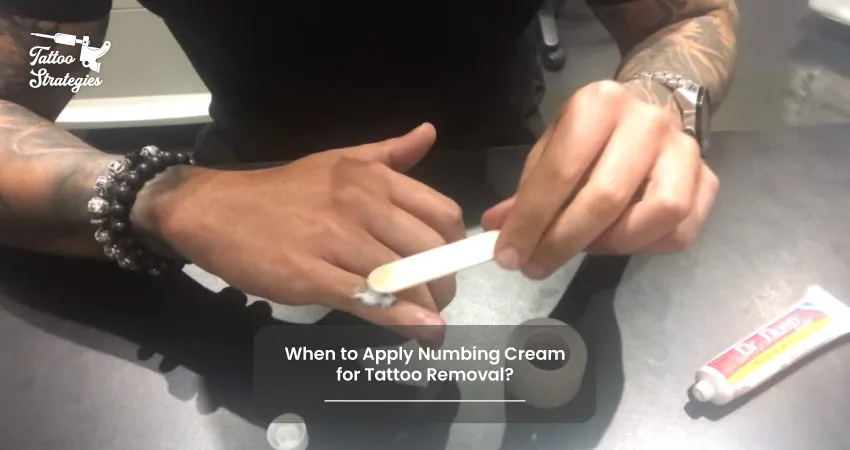
Timing is important. It takes about an hour for the cream to work. So, you need to think about what time it will really be an hour before you go under the needle. Remember that your practitioner may require additional time to set up and draw. If you expect to have a long session, it may be best to put on the numbing cream at the tattoo shop while you wait rather than at home.
Possible Skin Reactions After Using Numbing Cream for Tattoo Removal
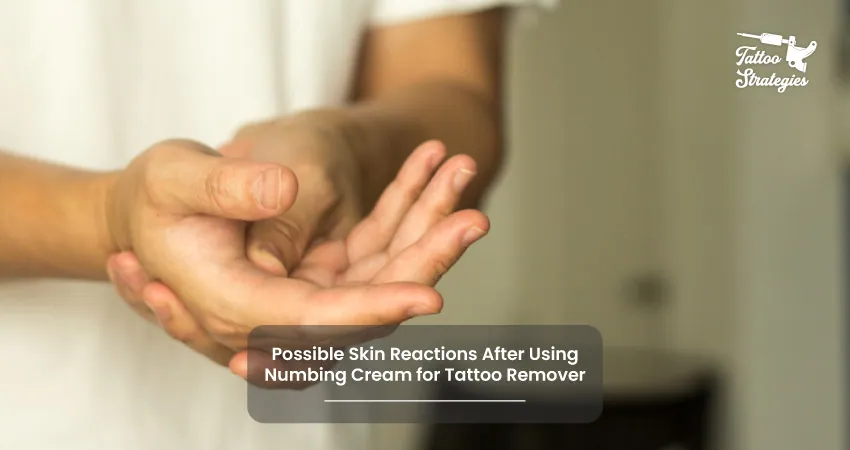
There are times when numbing cream can cause a small skin reaction.The most common case is when you use the cream right after shaving the skin.
Reactions like rash, hives, itching, red, swollen, blistered, or peeling skin with or without fever, wheezing, chest tightness, difficulty breathing, swallowing, unusual hoarseness, or swelling of the mouth are most common. Because of this, it’s best to try a small amount of the cream on your skin first to see how it reacts.
Alternatives to Using Numbing Cream for Tattoo Removal
There are a few things a practitioner can do to make a patient feel better.
Ice Packs
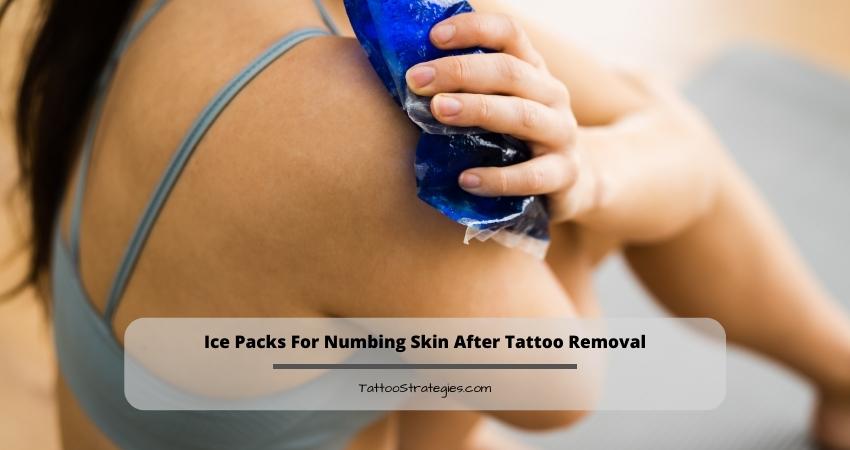
Surprisingly, ice packs are a great alternative for clinics that do a low to moderate number of tattoo removals every day.
Using ice packs to numb the skin is simple, cheap, and easy. Within five to ten minutes of compression, the skin of patients will be numb enough to make the tattoo removal treatment go much more smoothly.
The only problems with numbing with ice packs are that they aren’t as effective as other methods and it can be hard to keep the ice packs cold when there are a lot of patients. Also, ice packs can only numb the skin before and after the treatment, not during it.
Lidocaine Injections
Lidocaine injections can be used as a local anesthetic right away, unlike numbing creams. But it takes a while to make multiple injections, especially for large tattoos. Lidocaine injections are often used to numb the area before plastic surgery, but they are not as popular as other numbing methods because they can only be given by a doctor.
Cold Air Machine
Cold air machines are used in almost all tattoo removal clinics with a lot of clients because they numb the skin quickly and easily. Cold air can be used on the skin before, during, and after laser treatment, but ice packs cannot. The system is very reliable and is made to be used in busy medical offices. It works by blowing out -30°C (-22°F) air through a flexible hose.
By blasting this cold air on the skin for a few minutes, the skin will be fully cooled for treatment, reducing pain and the chance of heat injuries.
This is a very advanced technology for numbing your skin, and you won’t find it in every clinic. which also implies that using this method can be a bit more expensive compared to other numbing methods.
To Sum Up
After all this is said and done, we hope you got your answer on whether to use numbing cream to reduce pain during the tattoo removal process?
The answer is that it is not always very effective to reduce the pain of tattoo removal, but it can give you some form of relief, which is always better than nothing.
But it is always safe to take advice from your doctor on whether you can use numbing cream or not.
Similar Articles:
